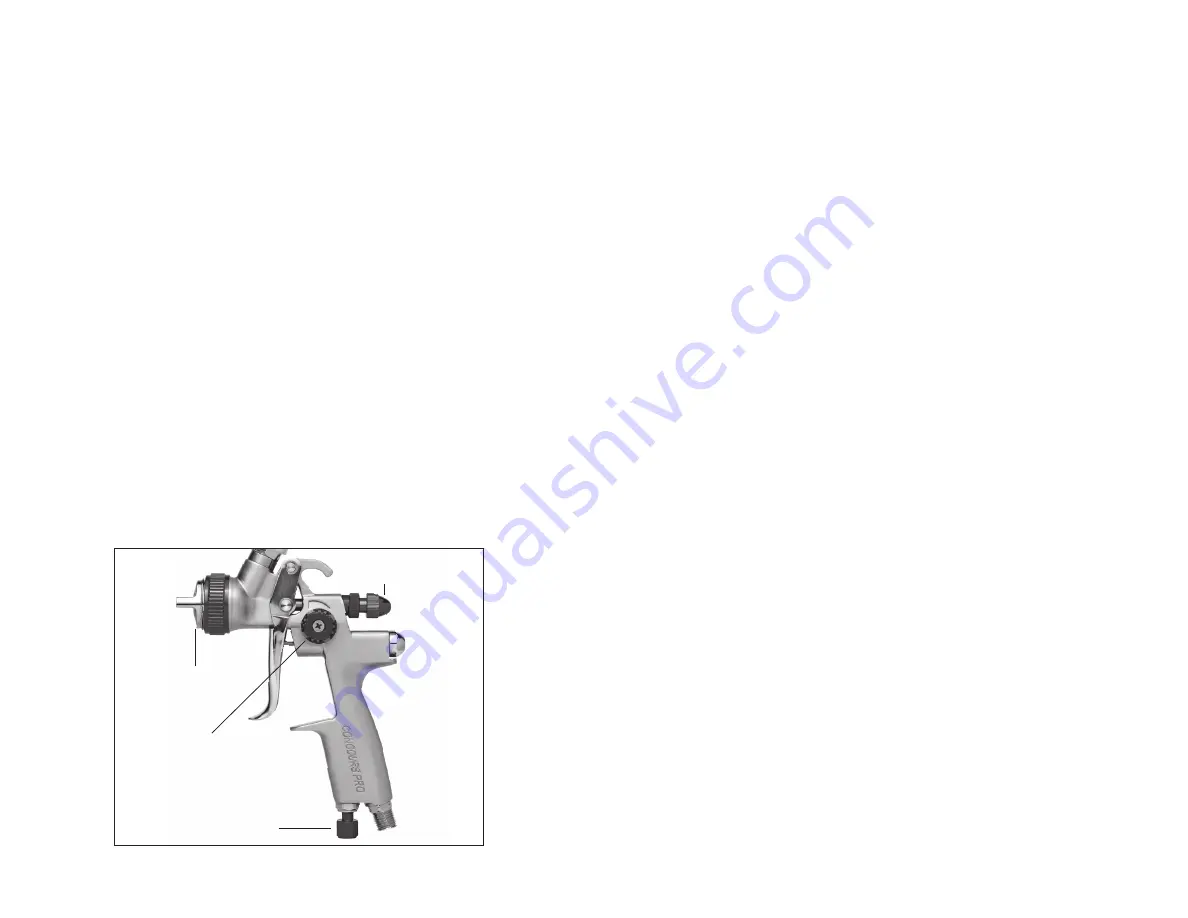
4
Eastwood Technical Assistance: 800.544.5118 >> techelp@eastwood.com
To order parts and supplies: 800.345.1178 >> eastwood.com
5
GUN SETTINGS
•
Air Cap
– Make sure the Air Cap is properly oriented in a horizontal plane to produce a
vertical fan spray pattern (as viewed from the front). To adjust, loosen Retaining Ring by
rotating counter-clockwise slightly, adjust Air Cap then re-tighten Retaining Ring (Fig A).
•
Fluid Control
– The Fluid Control knob (located at top rear of gun body) regulates the distance
the Needle travels and the amount of paint flowing through the gun. Note: Generally for higher
viscosity coatings, a wider opening is desired while a narrower opening is better suited for lower
viscosity fluids. To adjust, rotate the Fluid Control Knob outward (counter-clockwise as viewed
from the rear) to increase flow and turn inward to reduce flow (Fig A).
•
Fan Control
– The Fan Control knob (located at the upper left side of the paint gun body)
controls the size and shape of the spray pattern or “fan”. Rotating the knob counter-clockwise
will produce a larger and softer spray pattern. While rotating it clockwise will result in a smaller,
sharper pattern. For most painting conditions, a larger, softer fan is desired (Fig A).
•
Air Control
– The Air Control knob (located at the bottom of the gun handle adjacent to the air
inlet) is opened by rotating in a counter-clockwise direction (as viewed from the bottom
of the gun). This is for “fine tuning” the airflow to the gun. You will generally want to set the
inlet pressure at the regulator, start with the Air Control in the full open position and decrease
air as needed (Fig A).
• With practice, you will quickly acquire a “feel” for the gun and will be producing
professional results.
• When you have achieved your optimal knob settings, note their positions with the indicators
on the gun body and knobs. This will assist in quickly “tuning” the gun for future uses.
IMPORTANT NOTES BEFORE PAINTING
1. Please note that many variables may affect the adjustment of a paint gun including paint
viscosity and type, atmospheric conditions such as humidity, barometric pressure and
temperature, as well as air inlet pressure and operator preference. Always “tune” the gun
before each use as prevailing conditions may not be the same as the previous use.
2. It is always best to test spray, the actual paint you will be applying, on sheets of cardboard or
masking paper while making your adjustments to become familiar with the gun and achieve the
ideal Fluid Control Setting.
3. Remember that a small amount of product wasted at this point can avoid disappointment in
your results and the need to re-do your work later.
CLEAN-UP
• Disconnect air supply to gun.
• Remove Paint Cup and pour unused coating into proper container.
• Wipe out any excess coating then thoroughly rinse the Paint Cup with a mild solvent compatible
with the coating being used.
• Fill Paint Cup with solvent and pull the trigger to allow fluid to run through until it flows clear.
Note, as an alternative, #12846Z Eastwood Aerosol Injected Gun Cleaner is excellent for
this purpose.
• Pour out any unused solvent and remove paint cup.
• Allow solvent to dry completely from all components.
• Dispose of waste solvents and all other liquid materials according to your local
laws and regulations.
Air Cap
Air Control
Fluid Control Knob
Fan Control Knob
Fig. A


























